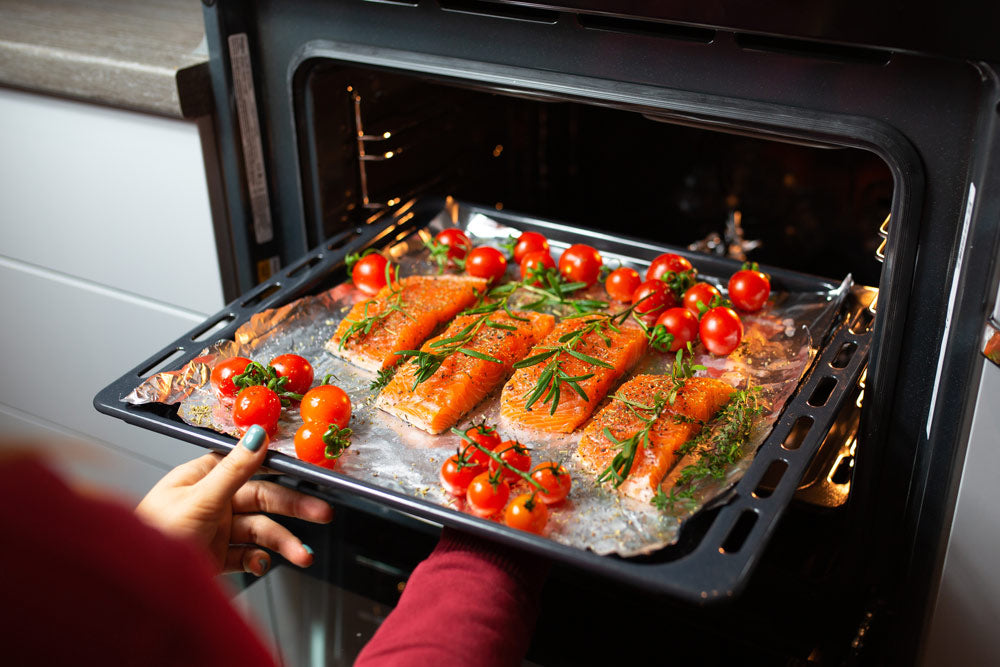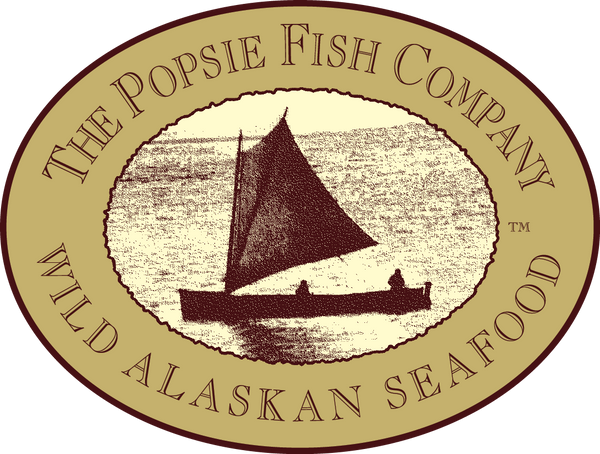
How to Roast Salmon
Why roast salmon?
Of all the varied ways you can prepare this beautiful, red-fleshed salmon, roasting is one of the easiest and most foolproof. The succulent, mouth-watering, flaky results always draw rave reviews.
Roast salmon makes a beautiful entrée
Roasting allows wild salmon to become a beautiful burnished color, and a whole roasted filet provides an elegant and impressive presentation. A perfectly roasted piece of wild-caught Alaskan sockeye salmon is as tasty as it is beautiful.
Oven roasted salmon is quick and easy to prepare
This method of cooking salmon doesn’t require much preparation or constant attention. Simply preheat your oven to a moderately hot temperature (375° F or 190° C). Roasting filets in a baking pan or sheet pan is a fast and delicious way to cook more than one filet at a time.
Roasting time will vary based upon the size and thickness of your salmon and the temperature of your oven. Individual and filet portions of wild-caught sockeye salmon cook quickly, usually taking 12-15 minutes in the oven, while a whole, thick filet may take up to 20 minutes.
How to prepare your wild salmon for roasting
Choose premium wild-caught Sockeye salmon. Remove salmon from the refrigerator and allow it to rest for 15-20 minutes to come to room temperature. Gently but thoroughly pat the salmon dry, skin and all, with a paper towel.
Keep your aromatics simple. When adding spices, herbs and other ingredients, remember, less is best. Don’t complicate the dish. Wild salmon has a subtle taste and a delicate, silky texture. For best results, season salmon just before roasting. Salting too soon and will draw out too much moisture.
Line your baking pan with parchment paper for easy clean-up. Bake your wild salmon with the skin side down. This will protect the tender filet from the heat of the pan and help it retain its juices and cook evenly.
How to check for degree of doneness
Cooking time will vary, as wild salmon filets vary in thickness. If you have a thermometer, aim for about 125° F for medium rare and 140° F for thoroughly cooked You can also keep in mind that cooking wild salmon for about 4-6 minutes per half inch of thickness (measuring at the thickest part of the filet) is a good guide.
Check for doneness by using a sharp knife and peeking inside the thickest part of the filet. The fish should look opaque, and the layers within the salmon should flake apart easily.
Please, don’t overcook your wild salmon. It will dry out and not be as succulent. Most restaurants serve salmon medium rare. Open your mind to wild salmon cooked to a lesser degree of doneness than you may be used to. Ideally, remove salmon from the oven a few minutes before it’s to your degree of doneness, as the residual heat within the flesh will continue to cook it while it rests.
When it’s time to serve your roasted salmon, the skin will come off easily if you slide a spatula between the filet and the skin. You can also serve it with the skin on.
If you're ready to roast a salmon, try this delicious recipe: Salmon with Lemon, Garlic, Dill and Caper Butter Sauce.
Enjoy!
